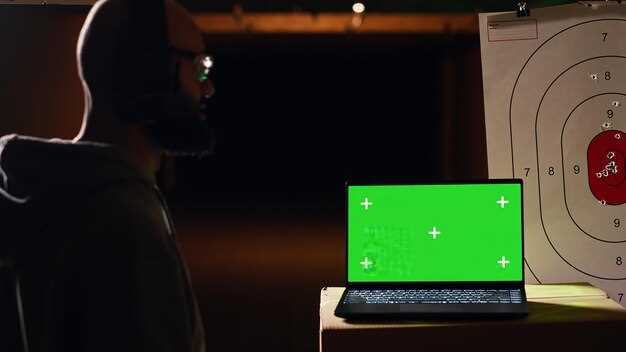How to Improve Target Detection in the Dark

In recent years, the field of target detection has made significant strides, particularly when addressing the challenges posed by low light conditions. As the demand for reliable detection systems grows in various applications, including surveillance, autonomous vehicles, and search and rescue operations, the ability to accurately identify targets under minimal lighting has become a critical area of focus.
The challenge of detection in low light environments stems from the limited availability of visual information, which can hinder the performance of traditional imaging techniques. This constraint necessitates the development and adaptation of novel algorithms and technologies that can enhance visibility and clarity, even in the darkest settings.
Innovative approaches such as multi-spectral imaging, advanced machine learning models, and sensor fusion techniques are paving the way for improved detection capabilities. By integrating various data sources and employing sophisticated processing methods, we can significantly enhance target visibility and recognition in challenging lighting conditions, leading to more efficient and effective outcomes.
Leveraging Infrared Imaging for Improved Target Visibility
In low light conditions, traditional imaging techniques often struggle to provide adequate target visibility. Infrared imaging emerges as a powerful solution, utilizing the thermal energy emitted by objects to enhance detection capabilities. Unlike standard visual cameras that rely on ambient light, infrared systems operate effectively in environments where light is minimal or nonexistent.
Infrared technology captures the infrared radiation, which all objects emit, regardless of the surrounding light conditions. This characteristic makes infrared imaging particularly valuable for surveillance, search and rescue operations, and military applications. By leveraging this capability, operators can detect targets that would remain concealed under normal lighting.
The deployment of infrared imaging systems significantly improves the ability to distinguish between various targets. For instance, the thermal signatures of a warm body, such as a person or animal, stand out starkly against cooler backgrounds. This differentiation not only facilitates target recognition but also aids in assessing the situation quickly, especially in emergency scenarios.
Furthermore, modern advancements in infrared technology have led to the development of enhanced sensors that provide higher resolution images and increased sensitivity. These improvements contribute to precise targeting even in challenging conditions where visibility is compromised. The integration of machine learning algorithms with infrared data further enhances the identification process, allowing for rapid analysis and actionable insights on target locations.
In summary, the application of infrared imaging is critical in enhancing target visibility in low light conditions. By capitalizing on the thermal signatures emitted by objects, operators can effectively detect and monitor targets that would otherwise remain undetected using traditional optical methods. This technology is essential for enhancing safety and operational success across various fields.
Optimizing Image Processing Algorithms for Low Light Scenarios

In low light conditions, detecting objects becomes significantly more challenging due to reduced visibility and increased noise in images. To enhance detection capabilities, it is crucial to optimize image processing algorithms specifically tailored for these scenarios. One effective approach is implementing noise reduction techniques that can minimize the impact of low light graininess, thereby improving the clarity of the images.
Adaptive histogram equalization is another method that proves beneficial in low light environments. By adjusting the brightness and contrast on a localized basis, this technique enhances details that might otherwise be obscured, facilitating better detection of targets within the scene.
Additionally, integrating advanced filtering methods, such as bilateral filtering or non-local means denoising, can improve the quality of low light images. These filters preserve edges while smoothing out the background noise, rendering important features more distinguishable for detection purposes.
Furthermore, the use of machine learning algorithms, particularly convolutional neural networks (CNNs), can also be leveraged to optimize detection in low light conditions. Training models with images captured in various low light settings allows them to learn specific patterns and characteristics, consequently enhancing their ability to detect objects effectively.
Finally, real-time processing capabilities can be achieved through optimized code and hardware acceleration, allowing for faster decision-making in critical applications. By refining these image processing algorithms, the detection of targets in low light scenarios can be significantly improved, leading to more reliable outcomes in various fields, including security, surveillance, and autonomous navigation.
Integrating Machine Learning for Real-time Detection Enhancements

In the realm of low light conditions, enhancing target detection techniques is crucial for numerous applications, ranging from surveillance to autonomous driving. Machine learning offers innovative solutions that can significantly improve detection rates and accuracy in these challenging environments.
Machine learning algorithms are designed to learn from data, allowing systems to adapt and improve over time. By training models on diverse datasets that include low-light images and various target types, it becomes possible to achieve robust detection capabilities despite adverse lighting conditions. For instance, convolutional neural networks (CNNs) have shown remarkable performance in object recognition tasks, making them ideal candidates for integration into detection systems.
One of the key advancements in detection is the application of image enhancement techniques powered by machine learning. Techniques such as histogram equalization and denoising autoencoders can preprocess images to improve visibility and highlight potential targets. By optimizing the contrast and reducing noise, these methods provide clearer images for subsequent analysis, resulting in higher detection rates.
Moreover, real-time detection can be achieved by leveraging models that perform inference on low-latency hardware. Implementing embedded systems with optimized neural networks enables immediate processing of video feeds, allowing for timely identification of targets. This is particularly beneficial in applications like security, where instant decision-making is critical.
Another promising approach is the use of transfer learning, which allows models pre-trained on well-lit datasets to adapt to new, low-light scenarios. This method reduces the time and resources required for training while maintaining high levels of accuracy, making it an efficient strategy for enhancing target detection capabilities.
Additionally, integrating machine learning with advanced sensor technologies, such as infrared and thermal imaging, can yield significant improvements in target detection. These sensors capture data beyond the visible spectrum, providing valuable information that machine learning algorithms can analyze to identify targets effectively, even in complete darkness.
In conclusion, the integration of machine learning into target detection systems significantly enhances performance in low light conditions. By employing innovative techniques for image processing and real-time analysis, it is possible to achieve highly accurate and efficient detection of targets, addressing the challenges posed by inadequate lighting.

